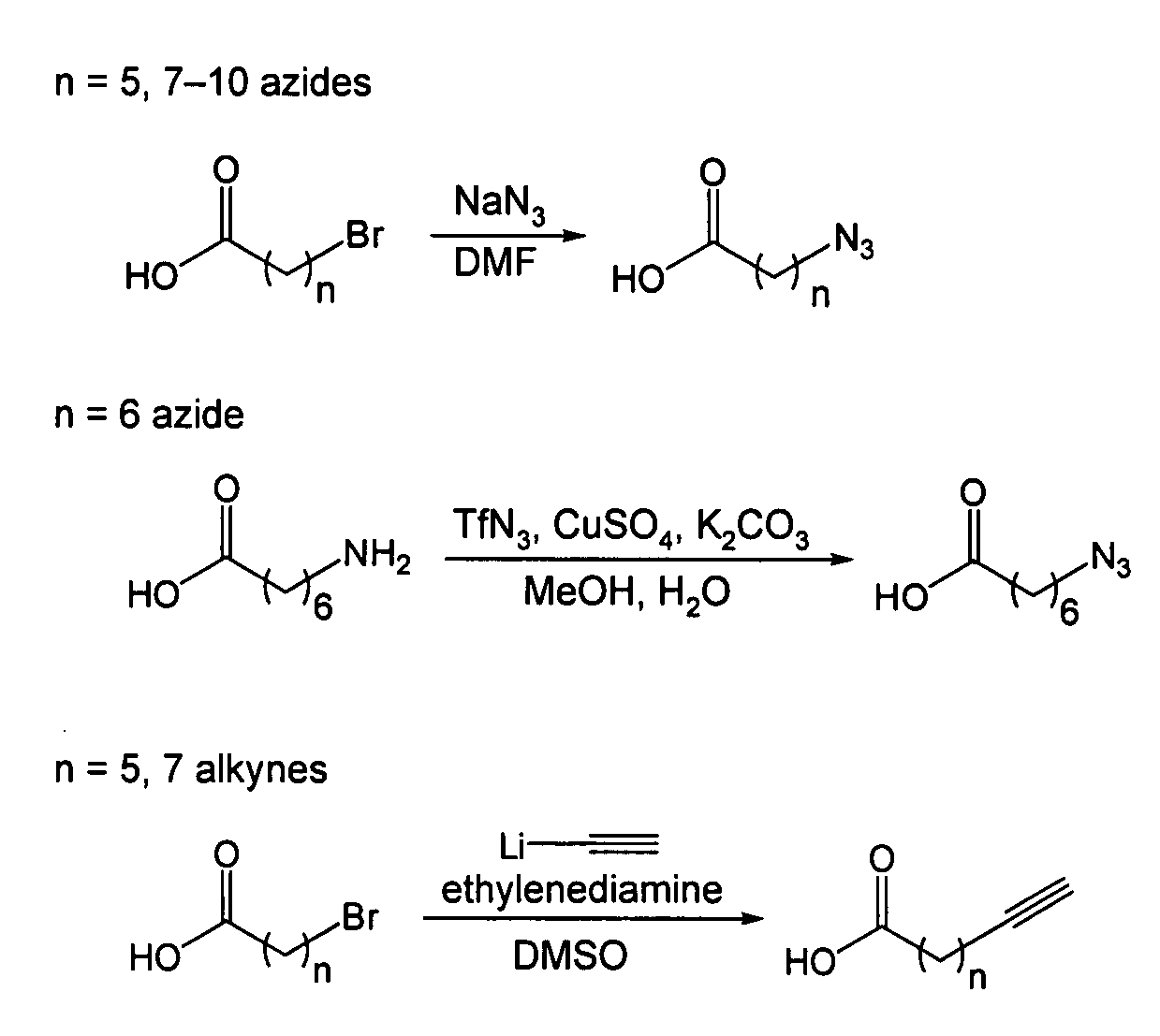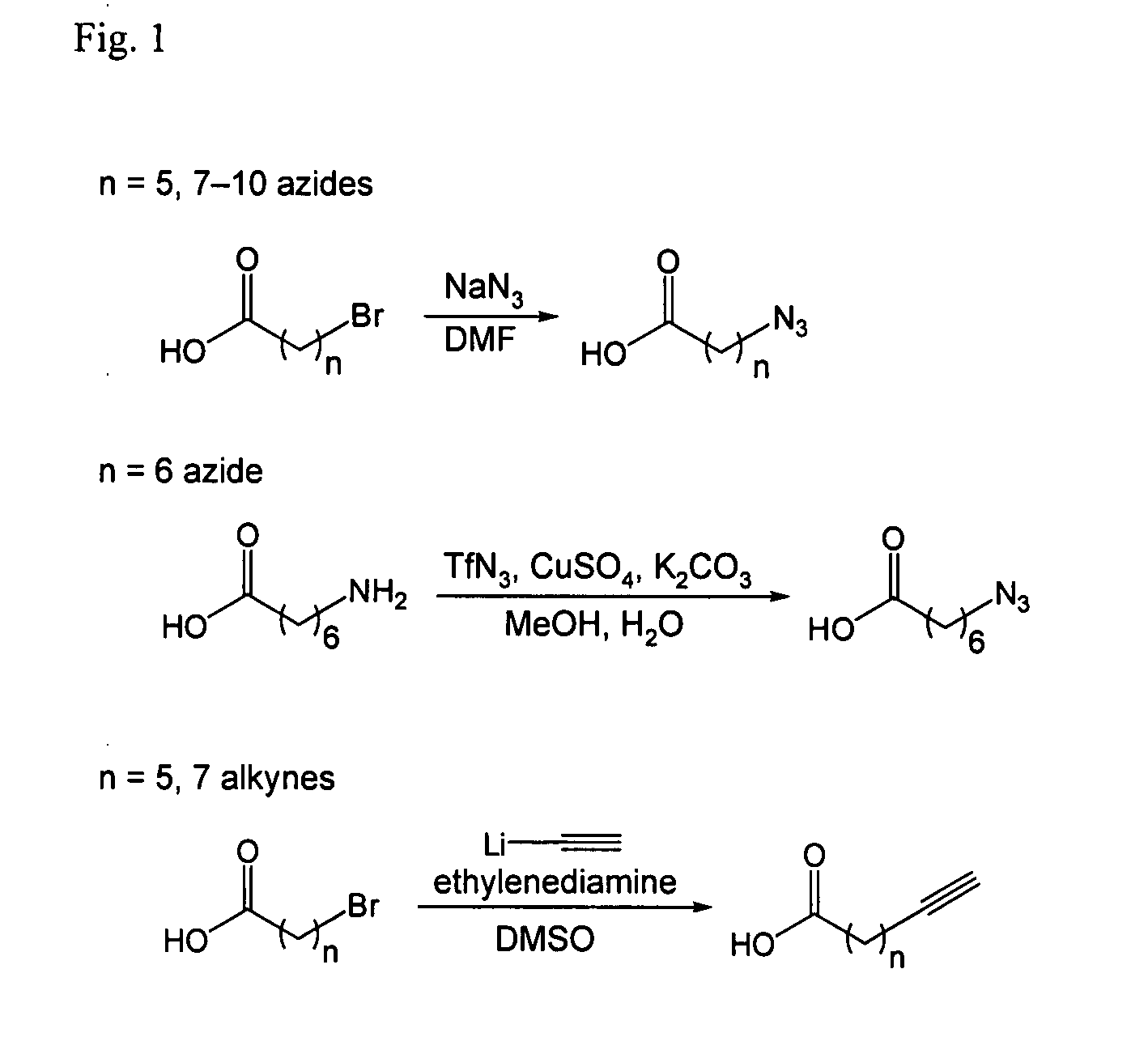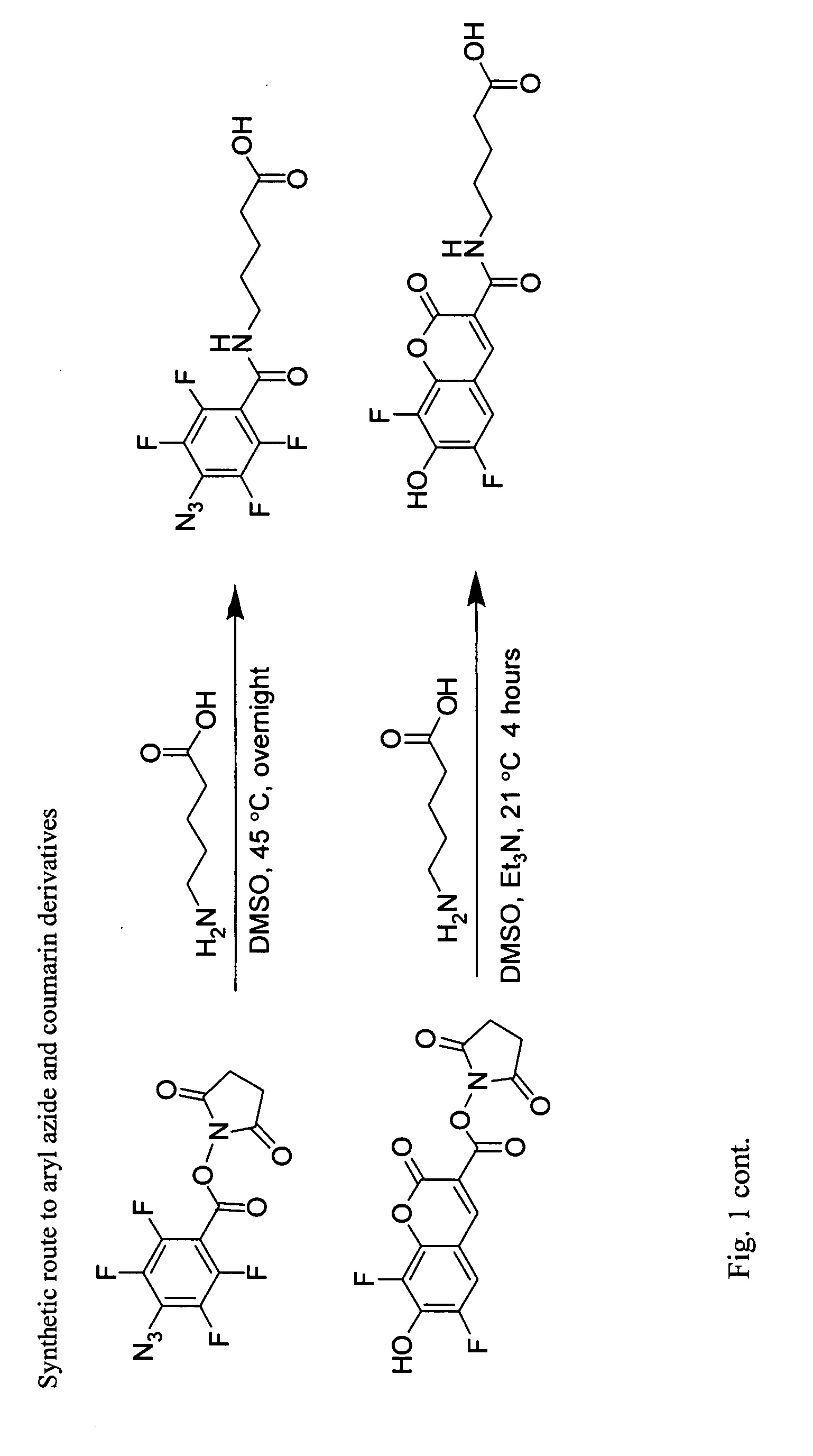Methods and compositions for protein labeling using lipoic acid ligases
a technology of lipoic acid ligase and protein, applied in the field of methods and compositions for protein labeling using lipoic acid ligase, can solve the problems of perturbing the function of the protein of interest, using such probes, and difficulty in targeting the probes with very high specificity to particular proteins of interes
- Summary
- Abstract
- Description
- Claims
- Application Information
AI Technical Summary
Benefits of technology
Problems solved by technology
Method used
Image
Examples
example 1
Introduction
[0125]The following are general synthetic methods used in the experiments described herein, including those of Example 2.
General Synthetic Methods
[0126]Reagents were purchased from Sigma-Aldrich (St, Louis, Mo.), Alfa Aesar (Ward Hill, Mass.), TCI America (Portland, Oreg.), Invitrogen (Carlsbad, Calif.), or GE Healthcare and used without further purification. Analytical thin layer chromatography was performed using 0.25 mm silica gel 60 F254 plates and visualized with ninhydrin or bromocresol. Flash column chromatography was carried out using silica gel (ICN SiliTech 32-63D). Mass spectra were recorded on an Applied Biosystems 200 QTRAP Mass Spectrometer (foster City, Calif.) using electrospray ionization. HPLC was performed on a Varian Prostar Instrument (Palo Alto, Calif.) equipped with an autosampler and photo-diode-array detector. For analytical HPLC, a reverse-phase 250×4.6 mm Microsorb-MV 300 C18 column was used. For preparative HPLC, a reverse-phase 250×10 mm Micr...
example 2
Introduction
[0174]Live cell imaging is a powerful method for studying protein dynamics at the cell surface, but conventional probes, such as antibodies and fluorescent ligands, are bulky, interfere with protein function (1,2), or dissociate after internalization (3,4). To overcome these limitations, we developed a method to covalently tag any cell surface protein with any chemical probe with remarkable specificity. Through rational design, we re-directed a microbial lipoic acid ligase (LplA) (5) to specifically ligate an alkyl azide to an engineered LplA acceptor peptide (LAP) tag. The alkyl azide is then selectively derivatized with a cyclooctyne (6) conjugated to any probe of interest. We demonstrate the utility of this method by first labeling LAP fusion proteins expressed on the surface of living mammalian cells with Cy3, AlexaFluor568, and biotin. Next, we combined LAP-tagging with our previously reported tagging method (7,8) to simultaneously monitor the dynamics of two recept...
PUM
| Property | Measurement | Unit |
|---|---|---|
| Fraction | aaaaa | aaaaa |
| Fraction | aaaaa | aaaaa |
| Fraction | aaaaa | aaaaa |
Abstract
Description
Claims
Application Information
 Login to View More
Login to View More - R&D
- Intellectual Property
- Life Sciences
- Materials
- Tech Scout
- Unparalleled Data Quality
- Higher Quality Content
- 60% Fewer Hallucinations
Browse by: Latest US Patents, China's latest patents, Technical Efficacy Thesaurus, Application Domain, Technology Topic, Popular Technical Reports.
© 2025 PatSnap. All rights reserved.Legal|Privacy policy|Modern Slavery Act Transparency Statement|Sitemap|About US| Contact US: help@patsnap.com



